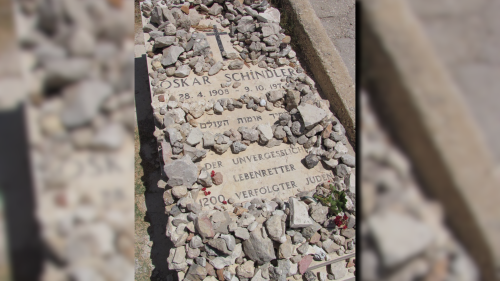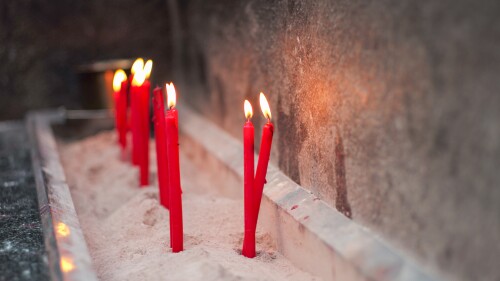The myths of a “patriotic” or “altruistic” Egyptian military carefully protecting the “rights” of its citizenry—the narrative of the mainstream media of the January 25 Revolution—are long gone.
Back in January, it was natural to conclude that the Egyptian military was the “savior” of the people, and that their “anti-democratic” president, Hosni Mubarak, embodied all of Egypt’s ills: such views are intrinsic to the Western worldview. Today, however, far from allowing protesters to stand atop its tanks in triumph, the military has taken to mowing them down with tanks at Maspero, and other barbarities—culminating in the recent massacre of civilians in Tahrir [ironically, “Liberation”] Square.
The military’s behavior is hardly inexplicable; Egypt’s own history offers countless precedents demonstrating context and continuity. Consider the Mamluks, the non-Muslims who were abducted and enslaved in youth, indoctrinated in Islam, and trained to become jihadists par excellence. While the Ottoman Janissaries, who terrorized Europe for centuries, are the most notorious of Islam’s slave soldiers, Egypt’s Mamluks—the word mamluk simply means “owned"—actually assumed power, establishing a slave dynasty in Egypt from 1258-1517.
Known for their fierce prowess—testified to by the fact that it was they who first defeated the otherwise unstoppable Mongol hordes at Ayn Jalut—Egypt’s Mamluk rulers were naturally oppressive, to both Muslims (which is legitimate under Islamic law) and non-Muslims (which is expected).
As James Jankwoski put it:
Ultimately, Mamluk rule rested on force. The chronicles of the period are replete with examples of Mamluk violence against the indigenous population of Egypt... From horseback, they simply terrorized those lesser breeds who crossed their paths. The sudden and arbitrary use of force by the government and its dominant military elite; frequent resort to cruelty to make a point; ingenious methods of torture employed both for exemplary purpose and to extract wealth from others: all these measures were routine in the Mamluk era.
But while the Mamluks were not indigenous, Egypt’s military today is made up natives; and while the Mamluks were slaves, today’s soldiers are free. These differences make the brutality of today’s military that much more objectionable.
In both cases, Egypt’s Christians suffer the most, especially under the concept of “collective punishment,” wherein Islam’s “dhimmi” Christians are attacked in response to other Christians: during the Mamluk era, when Muslims were fighting and defining themselves against the Christian Crusaders, today as the Muslim world becomes increasingly hostile to and defines itself against all things Western, including Christianity.
Reading Adel Guindy’s Hikayat al-Ihtilal [“Stories of Occupation”], an Arabic study of the various occupying forces of Egypt since the Arab invasion ca. 640, one comes across centuries of burned churches and persecuted Christians, forced conversions, and exorbitant jizya—taxes imposed on non-Muslims, who were, and evidently still are, treated as sub-human, second-class citizens (see Quran 9:29). These abuses of non-Muslim “infidels” were everyday features of Mamluk Egypt, so much so that it was then that the majority of Egypt’s Christians sought relief by converting to Islam.
Currently, under military rule, Egypt’s Christians are persecuted, calls for jizya are back, and churches are destroyed with regularity.
Hikayat al-Ihtilal describes how, over 500 years ago, Muslims screaming “Allahu Akbar!” would destroy and plunder churches while Mamluk rulers sat by and looked on, as usual blaming the Christians. Today’s upsurge in church attacks—with officials either looking the other way or even justifying them—is, in fact, what caused Christians to protest at Maspero in the first place, only to be massacred.
At the close of his study concerning the Mamluk era, Guindy makes an especially pertinent observation: with the Mamluks’ rise to power, “Egypt entered into a five-and-a-half-century coma, which it did not revive from until the voice of Napoleon was heard knocking on its doors in 1798.”
In fact, it was only during the colonial era and into the 20th century—when Egyptians sought to emulate the ways of a then-confident West—that the Mamluk “approach” went dormant.
Today, as both Western appeal and influence fade in the Middle East—in Egypt, starting with Nasser’s Free Officers’ coup in 1952 and culminating in Tantawi’s pure military dictatorship—the threat of Egypt lapsing back into a “coma” becomes all too real, particularly under Muslim Brotherhood and/or Salafist rule, which early elections indicate.
Raymond Ibrahim is an Associate Fellow at the Middle East Forum and a Shillman Fellow at the David Horowitz Freedom Center.







